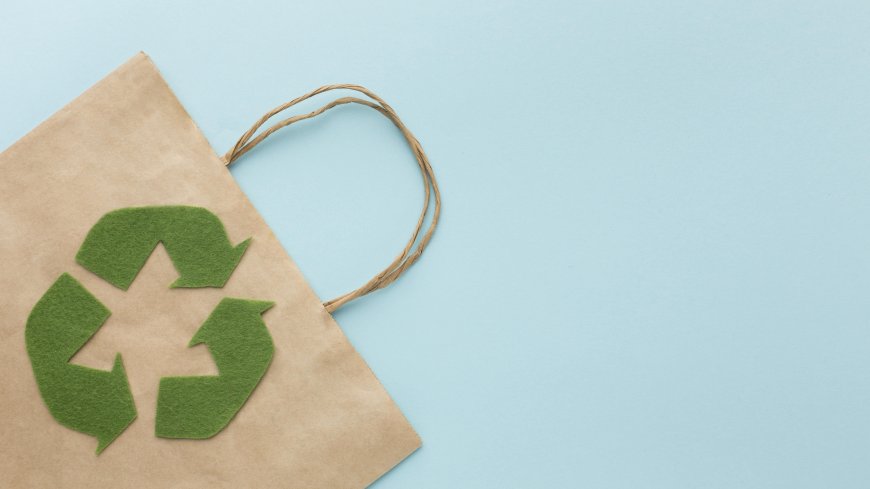Do Eco Friendly Products Really Help the Environment?
From food packaging to retail solutions, find out how eco friendly products are shaping the future of sustainability.

With rising awareness about climate change, plastic pollution, and deforestation, more people are looking for ways to reduce their environmental impact. One of the most popular and accessible changes is switching to eco friendly products. But as green marketing grows and buzzwords fill store shelves, its fair to ask: Do eco friendly products actually help the environment, or is it just a trend?
The short answer is yeswhen chosen wisely and used correctly, eco friendly alternatives can significantly reduce harm to the planet. Lets break down how.
What Are Eco Friendly Products?
Eco friendly products are items designed to minimize environmental damage throughout their lifecyclefrom production and usage to disposal. These products often rely on sustainable materials, consume fewer resources during manufacturing, and are made to be reused, recycled, or composted.
Examples range from reusable shopping bags and bamboo toothbrushes, to eco friendly food packaging that replaces single-use plastics. Their common goal is to reduce waste, energy usage, and pollution while encouraging sustainable living.
How Eco Friendly Products Make a Positive Impact
1. Reduction in Plastic Waste
One of the biggest environmental challenges we face is plastic pollution. Traditional plastic products, especially packaging, can take hundreds of years to break down and often end up in oceans, harming marine life. Switching to compostable or recyclable alternatives plays a key role in reducing this impact.
For example, eco friendly packaging solutions such as paper-based wraps, compostable containers, or reusable glass jars can replace plastic in food delivery and retail packaging. These options degrade safely or can be reused, dramatically lowering waste volumes.
2. Lower Carbon Footprint
Manufacturing conventional productsespecially those made from plastic or metalrequires significant energy and fossil fuel input. In contrast, many sustainable alternatives use natural or recycled materials that require less processing and emit fewer greenhouse gases.
Products like biodegradable cutlery, reusable cups, or packaging made from sugarcane fiber and cornstarch offer a much lower carbon footprint compared to their petroleum-based counterparts.
3. Less Toxic Pollution
Many industrial goods release harmful chemicals into the air and water during production and after disposal. On the other hand, well-designed eco friendly items avoid toxic dyes, adhesives, and materials. This leads to cleaner soil, water, and air, benefitting not just nature but human health too.
Eco Friendly Food Packaging: A Growing Need
Packaging, especially for food, has long been a major contributor to waste. From plastic takeout containers to multilayered snack wrappers, the packaging industry generates mountains of non-recyclable waste every year.
Fortunately, eco friendly food packaging has emerged as a smart alternative. Made from compostable bioplastics, bagasse (sugarcane residue), kraft paper, and other sustainable materials, these options offer functionality without harming the environment. They are safe for food contact, leak-resistant, and often suitable for both hot and cold foods.
Restaurants, caterers, and grocery chains are increasingly adopting these packaging options to reduce their environmental impact and appeal to eco-conscious consumers.
The Role of Businesses in Driving Change
Consumer demand is driving the shift, but its businesses that hold the power to make eco friendly products the norm. From packaging design to supply chain choices, companies are making critical decisions that influence sustainability.
For instance, brands are now seeking eco friendly packaging solutions that are both cost-effective and scalable. These solutions help companies reduce landfill contributions, improve brand image, and meet emerging environmental regulations. Its not just about going greenits about future-proofing business operations.
Retailers are also adding dedicated sustainable or zero waste sections, making it easier for consumers to find products that align with their values. When brands and consumers work together, meaningful change becomes possible.
Are All Eco Friendly Products Truly Sustainable?
Heres where the conversation gets nuanced. Not all products labeled as eco friendly deliver on their promise. Greenwashinga marketing tactic where companies exaggerate or falsely claim sustainabilitycan mislead consumers.
To truly make a difference, its important to look for products that are:
-
Certified (e.g., compostable certifications like ASTM D6400, EN13432)
-
Made from renewable or recycled materials
-
Designed for reuse or composting
-
Locally produced to reduce transportation emissions
Being an informed consumer is just as important as choosing eco friendly options.
Simple Switches That Add Up
Transitioning to a sustainable lifestyle doesnt require an overhaul overnight. Its the small choices that, over time, lead to significant impact:
-
Swapping plastic wrap with beeswax wraps
-
Using eco friendly food packaging for leftovers or packed meals
-
Buying in bulk to avoid excess packaging
-
Choosing biodegradable garbage bags or compostable tableware
-
Replacing plastic shopping bags with jute or cloth totes
Every purchase becomes a vote for the kind of world we want to live in.
Final Thoughts
Eco friendly products do help the environment, especially when used intentionally and backed by responsible production. While no product is entirely impact-free, many sustainable alternatives can dramatically reduce pollution, conserve resources, and support healthier ecosystems.
What matters most is combining individual actions with business innovation and policy support. With eco friendly choices becoming more accessible and affordable, its easier than ever for individuals and companies to make a difference.
Whether youre a homeowner, a small business, or a large retailer, embracing eco friendly packaging solutions and products is a step in the right directiontoward a cleaner, greener future.


































